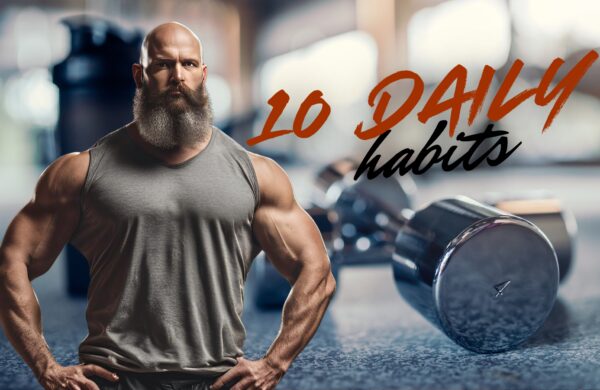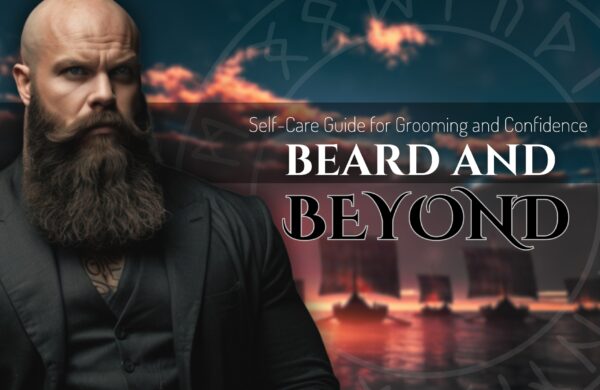Introduction to Creative Hobbies for Men
Self-Care through creative and physical hobbies for Men has become popular in modern wellness discussions, often linked with taking a break from technology, practicing mindfulness, or engaging in simple relaxation techniques. However, many men overlook self-care practices, dismissing them as nonessential or frivolous. Societal stereotypes and gender expectations sometimes suggest that men should endure stress in silence or simply “toughen up.” This mindset ignores an essential truth: men’s mental and physical health significantly benefit from proactive, positive self-care measures.
In this article, we’ll explore the concept of Men’s Self-Care Through Creative and Physical Hobbies, focusing on how both types of hobbies can serve as powerful tools for stress relief, improved mental health, and general well-being. By “creative hobbies,” we refer to any pastime that involves imagination, self-expression, or artistic endeavor—such as painting, writing, music, or crafts. Meanwhile, “physical hobbies” include sports, exercise regimens, outdoor activities, and other forms of physical movement. Whether your goal is to reduce stress, reconnect with your inner passions, or simply find a more balanced lifestyle, these hobbies offer structured avenues for self-improvement and relaxation.
The beauty of men’s self-care through hobbies is that it doesn’t require a drastic lifestyle change; even brief yet consistent engagement can yield notable results. Throughout this article, we’ll present actionable strategies, real-life success stories, and research-backed insights from reputable sources. We’ll also delve into potential challenges—like time constraints or financial barriers—and provide solutions to make hobbies more accessible to everyone.
By the end, you’ll understand how creative and physical hobbies can integrate seamlessly into your daily or weekly routines, offering emotional renewal, better focus, and stronger resilience against the everyday stresses that modern men often face. This comprehensive guide aims to inspire you to take the next step in your self-care journey and discover which hobbies resonate with you most.
Importance of Self-Care for Men
A. Changing Perspectives on Masculinity
Traditional notions of masculinity have frequently downplayed men’s emotional needs. Men are often expected to be stoic providers, prioritizing work and family while neglecting personal well-being. However, more and more men are embracing the idea that self-care is not a weakness but an important aspect of overall health. As society gradually moves past rigid gender roles, men are finding new ways to express vulnerability and seek help—be that through therapy, supportive communities, or simpler acts of self-preservation like hobby exploration.
B. The Mental Health Factor
Stress, anxiety, and depression do not discriminate by gender. According to the American Psychological Association, men are equally susceptible to mental health challenges, but they tend to seek help less often than women. Left unaddressed, these issues can lead to harmful coping mechanisms, relationship struggles, and even more severe health complications. Incorporating regular hobby-based self-care practices offers a proactive solution, providing relaxation, enjoyment, and emotional support.
C. Physical Health Correlations
Physical well-being is closely intertwined with mental health. Chronic stress elevates cortisol levels, contributing to problems like hypertension, heart disease, and weakened immune function. Engaging in consistent self-care routines—especially ones that involve physical activity—helps mitigate such risks. Whether it’s walking, running, dancing, or more structured forms of exercise, an active hobby not only releases endorphins but also fosters a healthier lifestyle.
D. The Role of Hobbies in Self-Care
Hobbies are distinct from daily chores or professional tasks because they are voluntarily chosen. This autonomy offers men a sense of freedom and personal identity, essential for psychological well-being. By choosing a hobby that aligns with one’s interests or aspirations, men can cultivate newfound focus, reduce stress, and develop positive coping mechanisms. The key is consistent engagement: making small but meaningful time investments every week can drastically elevate one’s quality of life.
Creative Hobbies
A. Benefits of Creative Hobbies
Creative hobbies often engage the right side of the brain—the region associated with imagination, artistic ability, and out-of-the-box thinking. However, creativity is not restricted to painting or drawing. Any activity that encourages innovative thinking, problem-solving, or emotional expression can be considered creative. This might include:
- Visual Arts: Painting, sculpting, or sketching
- Performance Arts: Acting, playing an instrument, singing, dancing
- Literary Arts: Creative writing, journaling, poetry
- DIY Projects: Home crafts, woodworking, or electronics tinkering
Engaging in creative pursuits has multiple benefits:
- Stress Reduction: Focusing on an artistic project can serve as a form of mindfulness, shifting attention away from daily worries.
- Improved Emotional Regulation: Art, music, and writing help externalize internal emotions, offering clarity and relief.
- Boost in Self-Esteem: Completing a project—like a painting or a short story—creates a sense of achievement and pride.
- Increased Brain Plasticity: According to research cited by Harvard Health Publishing, learning new skills that challenge your brain (such as mastering a new technique in painting or writing) can promote mental agility and cognitive health.
B. Real-Life Stories
- James, 42, Software Developer: After experiencing significant burnout at work, James decided to revisit his childhood love for drawing. Starting with just 15 minutes a day, he discovered that even short sketching sessions eased his mind and improved his focus. Over time, he built a small portfolio and even shared his work online, finding a supportive community that motivated him to keep going.
- Caleb, 29, Accountant: Feeling like he lacked a creative outlet, Caleb began experimenting with guitar lessons on weekends. Initially intimidated by music theory, he persevered, using online tutorials and practicing basic chords nightly. Today, he performs occasional open-mic gigs—an activity he credits with boosting his self-confidence and relieving daily stress.
C. Examples and Actionable Steps
- Visual Arts (Drawing, Painting, Sculpting)
- Starter Tip: Invest in a basic set of pencils or paints and follow online tutorials. Focus on drawing simple objects initially.
- Low-Cost Approach: Use free instructional videos on YouTube; explore community-driven platforms like Reddit’s r/SketchDaily for feedback.
- Creative Writing (Journaling, Poetry, Short Stories)
- Starter Tip: Begin with a daily 10-minute freewrite. Jot down anything that comes to mind—emotions, observations, or snippets of dialogue.
- Low-Cost Approach: Use free writing apps or a simple notebook. For constructive criticism, join writing communities like Scribophile or local writer’s groups.
- Musical Pursuits (Guitar, Piano, Drums, Digital Music)
- Starter Tip: Choose an instrument you genuinely love to listen to. Use step-by-step lesson apps or beginner-friendly online courses.
- Low-Cost Approach: Rent or buy a secondhand instrument. Explore YouTube channels like JustinGuitar or Pianote for free beginner lessons.
- Acting or Improv
- Starter Tip: Sign up for a community theater workshop or try weekly improv classes. This helps develop public speaking and quick-thinking skills.
- Low-Cost Approach: Attend local open auditions for short plays or volunteer at theater groups to immerse yourself in the creative environment.
Physical Hobbies
A. Physical Health Benefits
Physical hobbies not only build muscle strength, endurance, and cardiovascular health but also exert a powerful effect on mental well-being. Activities like running, cycling, or playing a sport release endorphins—the body’s natural “feel-good” chemicals—which help combat stress and improve mood. Studies indicate that routine exercise can lower the risk of depression, reduce anxiety levels, and cultivate a stronger sense of self-esteem.
Key Physical Health Benefits:
- Weight Management: Burning extra calories and promoting a healthier metabolic rate.
- Reduced Disease Risk: Lower likelihood of heart disease, high blood pressure, and type 2 diabetes.
- Strengthened Immune System: Regular exercise can enhance the body’s natural defenses.
- Better Sleep Quality: Physical exertion often correlates with deeper, more restorative sleep patterns.
B. Real-Life Stories
- Malik, 35, Corporate Consultant: Facing chronic back pain and stress from frequent travel, Malik decided to try yoga. Initially skeptical about its effectiveness, he discovered that the blend of stretching, breathwork, and mindfulness significantly alleviated his back issues and lowered his stress levels. Malik now incorporates yoga sessions at least three times a week and attributes his improved posture and mood to this once-dismissed hobby.
- Thomas, 50, Sales Executive: Worried about his sedentary lifestyle, Thomas began cycling as a weekend hobby. After investing in a modest bike, he started small with local trails. Over a few months, he lost weight, felt more energetic, and joined a cycling group that organized charity events. The camaraderie and sense of achievement not only helped him stay committed but also gave him a more optimistic outlook on life.
C. Examples and Actionable Steps
- Running or Jogging
- Starter Tip: Begin with short intervals—walk for two minutes, jog for one minute, and gradually increase jogging time.
- Equipment: Invest in a quality pair of running shoes to prevent injuries.
- Motivation: Use apps like Strava or Nike Run Club to set goals, track progress, and join virtual run clubs.
- Yoga or Pilates
- Starter Tip: Seek out a beginner-friendly class or follow instructional videos from professionals like Yoga with Adriene.
- Equipment: A supportive yoga mat and comfortable workout clothes.
- Long-Term Benefits: Enhanced flexibility, reduced muscle tension, and improved mind-body awareness.
- Team Sports (Basketball, Soccer, Softball)
- Starter Tip: Join a recreational league or gather friends for a weekly match.
- Social Aspect: Group sports foster camaraderie and teach teamwork, leadership, and discipline.
- Health Gain: High-intensity intervals that improve cardiovascular endurance and coordination.
- Martial Arts (Karate, Brazilian Jiu-Jitsu, Taekwondo)
- Starter Tip: Start at a reputable dojo or martial arts academy offering beginner classes.
- Skill Development: Self-defense, mental focus, discipline.
- Additional Perks: Opportunities to compete in tournaments or progress through belt rankings.
- Dance Classes (Hip-Hop, Salsa, Ballroom)
- Starter Tip: Sign up for group lessons to learn fundamental steps and techniques.
- Social Interaction: Dancing encourages partnership, communication, and can boost self-confidence.
- Fitness Advantage: A full-body workout that targets endurance, balance, and agility.
Combining Creative and Physical Hobbies
A. Why Integration Matters
While focusing on a single hobby can be beneficial, combining both creative and physical pursuits can maximize self-care outcomes. Balancing the expressive freedom of creative hobbies with the stress-busting energy of physical activities ensures that different parts of the brain and body are being engaged. By weaving these hobbies together, men can enjoy a holistic self-care routine that covers emotional, mental, and physical well-being.
B. Synergies Between Creative and Physical Pursuits
- Enhanced Motivation: Diversifying hobbies keeps boredom at bay, maintaining long-term enthusiasm.
- Stress Relief on Multiple Fronts: Physical exercise helps release tension stored in the body, while creativity helps process emotions mentally.
- Opportunity for Social Expansion: Both types of hobbies can introduce you to distinct communities—e.g., a running club for your physical side, and an art meetup for your creative side.
C. Practical Integration Strategies
- Alternating Days
- Dedicate certain days to physical workouts (e.g., Mondays, Wednesdays, Fridays) and other days (Tuesdays, Thursdays) to creative projects.
- Keep weekends flexible for spontaneous activities.
- Short Sessions of Both in One Day
- Start or end your day with a brief creative session—like 15 minutes of journaling or sketching—and add 20-30 minutes of a physical routine.
- This approach helps reinforce habit formation without overwhelming your schedule.
- Combining Environments
- Outdoor Photography Hikes: Take your camera along on your nature walks or runs, blending creativity (photography) with physical exercise (hiking).
- Music and Movement: If you’re learning guitar or a certain style of dance, practice in short segments, interspersed with a home workout to get the blood flowing.
- Group Activities
- Join a local sports group and an art class. This gives you varied social circles, enhancing emotional support networks.
- Organize a day trip with friends that involves both painting in nature and moderate trekking—an excellent combination of creativity and physical activity.
D. Case Example
- Robert, 38, Teacher: Having pursued photography as a creative outlet, Robert realized he needed more physical activity in his life. He started hiking local trails, initially to capture scenic views. Over time, the hikes themselves became as enjoyable as the photography—he lost weight, gained endurance, and improved his mental health by immersing himself in nature.
Challenges and Solutions
Even the most beneficial hobbies can face hurdles. For men juggling careers, relationships, and other responsibilities, finding time or resources might seem daunting. Below are common obstacles and practical ways to overcome them.
A. Time Constraints
- Obstacle: A busy schedule filled with work, family commitments, or other obligations.
- Solution:
- Micro-Habits: Practice your hobby in short bursts (10-15 minutes). Over time, these small sessions accumulate into genuine progress.
- Calendar Blocking: Schedule hobby time just like an important meeting, ensuring it remains non-negotiable.
B. Financial Limitations
- Obstacle: Certain hobbies (like photography, golf, or traveling) can be expensive.
- Solution:
- Budget-Friendly Gear: Opt for entry-level or secondhand equipment when starting out.
- Free Resources: Tap into local libraries, open-source communities, or free online tutorials.
- Equipment Sharing: Borrow or share supplies with friends or community groups.
C. Social Stigma
- Obstacle: Men might fear judgment for pursuing “unconventional” hobbies such as dance, painting, or yoga.
- Solution:
- Redefine Masculinity: Recognize that real strength includes emotional intelligence and creative exploration.
- Community Support: Online forums, meetup groups, or classes can connect you with like-minded individuals, reinforcing your commitment.
D. Motivation Fluctuations
- Obstacle: Initial excitement can wane, leading to inconsistencies.
- Solution:
- Set Realistic Goals: Avoid overwhelming yourself. Target small, achievable milestones (e.g., completing one sketch a week).
- Buddy System: Partner with a friend or join a local club. Accountability greatly increases the likelihood of sticking with a new hobby.
E. Physical Limitations or Health Concerns
- Obstacle: Issues like chronic back pain, knee problems, or cardiovascular risks can deter men from physical hobbies.
- Solution:
- Consult a Professional: Seek advice from a doctor or physiotherapist to find suitable activities.
- Adaptive Options: Consider low-impact exercises (swimming, cycling, chair yoga) that cater to specific health conditions.
By proactively identifying these challenges and devising strategies to address them, you can more seamlessly incorporate hobbies into your life. It’s a matter of prioritization: once the importance of men’s self-care is truly understood, scheduling becomes easier, and investing in these activities feels justified rather than indulgent.
Conclusion
Men’s Self-Care Through Creative and Physical Hobbies is not only a trend—it’s a sustainable, scientifically supported approach to better mental and physical health. The importance of self-care for men cannot be overstated: balancing responsibilities, work pressures, and societal expectations is a significant challenge, but it becomes more manageable when you allocate time for the hobbies that bring genuine joy and relaxation.
Creative hobbies—like drawing, writing, playing an instrument, or exploring performance arts—encourage emotional expression and mental agility. They foster a sense of accomplishment that transcends daily workplace metrics. Physical hobbies—whether it’s running, yoga, dance, or team sports—harness the body’s natural stress-relief mechanisms, releasing endorphins and enhancing cardiovascular fitness.
Combining creative and physical pursuits can lead to a holistic self-care routine, targeting multiple dimensions of well-being—mental, emotional, and physical. Whether you alternate days or blend the two in a single session, the key is consistency and genuine interest. For many men, the greatest hurdles lie in finding the time, resources, or social acceptance. Yet, with a bit of planning, a willingness to learn, and an open mind about what constitutes “masculine” activities, these obstacles become surmountable.
Ultimately, the best hobby is the one you’ll commit to consistently—so experiment, explore, and discover new facets of yourself along the way. Your journey into Men’s Self-Care Through Creative and Physical Hobbies could be the catalyst for reduced stress, stronger emotional resilience, and a more fulfilling, balanced life.



